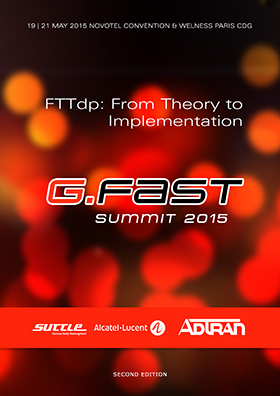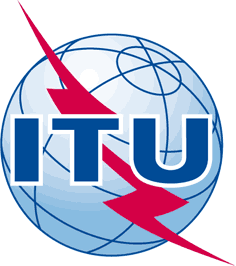TECHNICAL TUTORIAL | TUESDAY 19 MAY 2015
| 09.00 |
|
WELCOME, REGISTRATION AND COFFEE |
| |
|
|
MORNING SESSION
| |
|
PRESENTED BY BROADBAND FORUM AMBASSADORS |
| |
|
|
| 10.00 |
|
BBF: FTTdp and G.fast Certification |
| |
|
|
| |
|

Tom Starr, AT&T
Broadband Forum
|

Kevin Foster
Broadband Forum |
|
| |
|
|
| |
|
The BBF WT-301 specifies the architecture of FTTdp (fiber to the distribution point) system and WT-318 specifies the management of the DPU (distribution point unit). This includes two alternatives: TR-167-based where the access node functions are located in the DPU, and TR-156-based where much of the access node functions are located in a HON (higher order node). FTTdp uses cases including G.fast and VDSL2 will be discussed. |
| |
|
- uplink options (G-PON, XGPON1, point-to-point fiber, bonded copper)
- reverse power feeding
- PMA (persistent management agent)
- NETCONF/Yang management protocol
- automated service provisioning
- FTTdp in the context of SDN/ NFV
|
| 10.45 |
|
COFFEE BREAK |
| |
|
|
| 11.15 |
|
The BBF’s G.fast certification and interoperability testing program includes specifications for plugfest testing, conformance testing, interoperability testing, and oversight of qualified testing laboratories. The testing addresses both network-side and customer premises G.fast equipment. Example test cases, including noise conditions will be discussed. |
AFTERNOON SESSION
| |
|
PRESENTED BY ITU-T AMBASSADORS |
| |
|
|
| 14.00 |
|
ITU-T: G.fast Standards Developments |
| |
|

Frank Van der Putten ITU-T |

Les Brown
ITU-T |
|
| |
|
|
| |
|
The ITU-T G.fast standard (G.9970, G.9971) specifies the physical layer for transmission of up to one Gigabit-per-second over copper wires with signals transmitted up to 106 MHz. G.fast operates on copper wires to the customer premises and within the premises from a fiber-fed serving node that may be within the building or nearby. Transmission of a few hundred Mbits/s is supported on loops up to 400m. G.fast is designed to make self-installation of the equipment easy for the customer. |
| |
|
- forward error control and retransmission
- OLR and FRA (fast rate adaptation)
- discontinuous operation to reduce power consumption
- vectoring to remove far-end crosstalk
- adjustable ratio of the bit-rates in upstream and downstream directions
|
| 14.45 |
|
COFFEE BREAK |
| |
|
- control of frequency range, PSD, notching
- management and diagnostic functions
- protocol adaptation, data transmission units
- rate vs. reach performance
- current status of implementation and trials
- what is next for G.fast
|
| 16.00 |
|
END OF THE TUTORIAL |
Download the agenda in pdf











